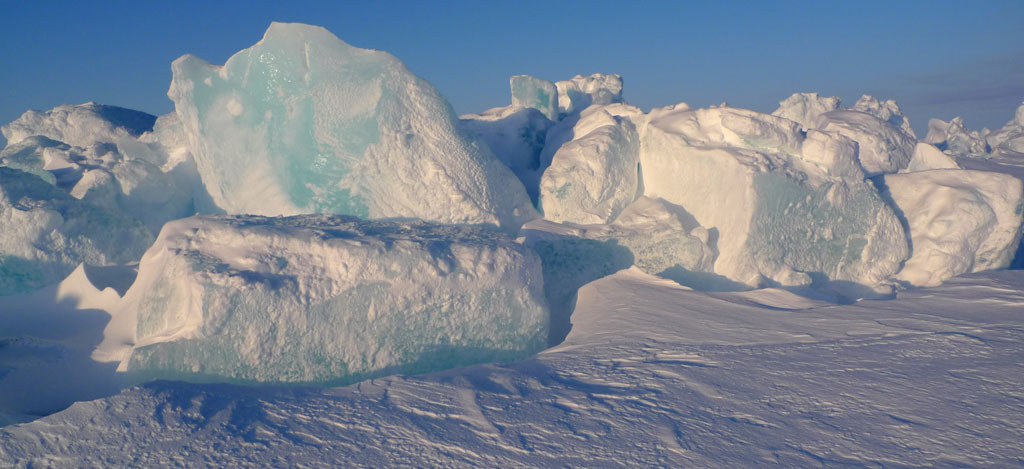
Bering Strait
Attempting to Bear the Strait
Even before I woke up my feet were dangerously cold and the wind still hammered the walls of the tent. It was March, still winter at this latitude, 60 miles south of the Arctic Circle. The temperature hung around -15F and the wind was blowing 35mph. Cold by just about anyone’s standards, but this was traveling weather.
There was very little I knew about the Bering Strait when world renowned polar explorer Dixie Dansercoer asked me if I wanted to cross this strip of ocean on foot. I automatically said yes, as I often do, when opportunities present themselves. I had met Dixie in Antarctica after he and a fellow Belgian had skied, unsupported, 2000 miles across Antarctica.
In March of 2004, my expedition partner, Dixie, and I had come to Wales, a remote north western Alaskan village, the closest point in the US to Russia. We were scouting out conditions for an expedition to be attempted a year later, in 2005. We had come to Wales to see what it was really like in March, how cold it really was, and mostly to see the Strait. To do this, we had to camp out, thus, my cold feet. An inadequate sleeping bag from a European sponsor provided a restless night of “trying to stay warm”, sleep. In the morning, it took me an hour and half of TRYING to get my feet warm before I began to feel them again. Lesson well learned: don’t let them get cold in the first place. In this environment, being that cold can turn dangerous very quickly.
And, the rumors we heard were true; there was open water in the Strait, and a lot of it. To deal with this we had specially engineered sleds that can not only take the abuse of being drug through ice, but can float, fully loaded, and with us on top of them. Even better, when lashed together make a quite stable form of catamaran. Why not put a sail on it and use the wind to propel us? That seems necessary. Specially made dry suits allow us to get wet, and even be submerged in the water, if necessary, yet, keep us warm and dry. I know this because I put on the dry suit and somewhat apprehensively climbed into the Bering Sea with the current, ice bergs, and 29F water temperature (due to the salt content). Surprisingly, not once was I cold or wet. If anything I was too warm for the 30 minutes I spent swimming around and climbing on ice bergs.
Although short on mileage (only 56 miles across), crossing the Bering Strait, may seem like a far fetched idea to some. It is an extremely windy, cold, and wet environment. This is a very difficult and dangerous combination of factors to deal with. But like so many things in life, with the right training, gear, weather, and karma it will all work out. Sure there are some inherent dangers, but the idea is to minimize those risks with proper preparation, sensible decision making, and experience. The challenge is to find a balance that allows success. It is not about being crazy or having a death wish, as I am so often asked. It is about experiencing a vast, wild environment, and pushing the limits of my personal potential.
In a few short weeks, Dixie and I depart once again for the Bering Strait. This time we will actually attempt to get to Russia by crossing the Strait on foot. For now, the preparations continue. Endless logistics and details occupy my mind during the long hours of training. And humor helps, mixed in with some unconventional training techniques. The other day, running, dragging a spare tire behind me, I ran through a neighborhood and heard someone say, boy he looks “tired”. A different day someone stopped and asked if I needed a ride to my truck to fix my flat. It gives me a laugh and makes the miles pass more quickly. Even the ice fisherman on the lake where I live, wonder what I am up to, as I ski past with several hundred pounds of sand in my sled. They continue fishing undaunted.
Like always before a big expedition I wonder if anything is left undone. I get that deep insecure, lonely feeling in my gut. I always have that feeling before a trip wrought with so many unknowns, but it is a necessary part of the preparations. Meanwhile, my mind churns away on every last detail and scenario of what could go wrong. We must be prepared for any situation that could present itself. Always there is gear to modify, sponsors to email, communications equipment to configure, and on and on. I sometimes wonder how it will all get done. But it will. And by mid March, Dixie and I will be poised on the edge of this continent, looking west to Siberia, ready to take on the challenges of what the Bering Strait has to offer. And with a little fortitude, perseverance, and luck, we’ll make it across.
Troy Henkels lives in Eagle River, Alaska and is a native of Dubuque, a 1985 graduate of Wahlert High School, and a 1989 graduate of the University of Northern Iowa. He writes about his adventures and experiences from around the world. Copyright 2005 Troy Henkels
Originally published in the Telegraph Herald, Dubuque, Iowa on February 20th, 2005.